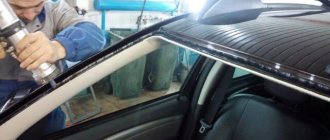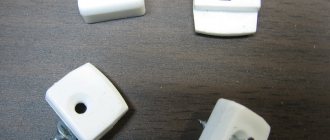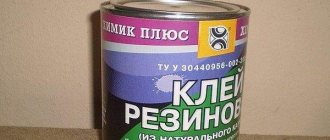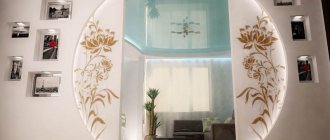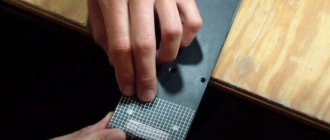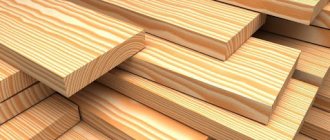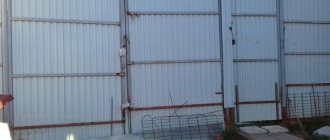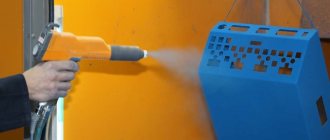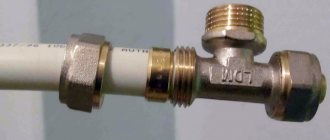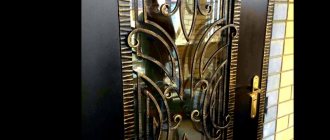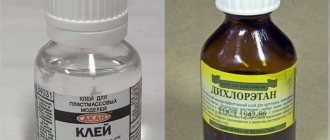How to glue a metal leg to a glass table
After 1.5 years of use, 2 metal legs fell off the glass kitchen table. We tried gluing it with Moment for glass. They fell off again after a month. Please advise what to glue it on so that it stays firmly in place?
Well, in general, such things are glued with a special UV glue designed specifically for glass. In addition to the glue itself, you also need a UV lamp. You can glue it at home without any problems. At one time I myself glued fusing onto glass sheets for interior doors, when I was working on glass, I glued it, one might say, “on my knees,” and it turned out very well. The glue itself is basically inexpensive, and you can make the lamp yourself if finances don’t allow it.
The metal legs of the glass table have come unglued. How can I fix them myself? What is needed for this?
To glue glass products, you must use special adhesives, for example, “Super Moment Glass”. This glue is ideal for gluing glass and crystal products to metal.
Clean the surfaces to be glued from dirt and dust, make sure that they fit tightly to each other. Apply glue evenly to one of the surfaces and immediately press the surfaces tightly together for 5-60 seconds.
The need for gluing glass and metal arises during the repair of a car, furniture or household appliances. Sometimes you need to firmly attach a mirror or repair the glass door in the oven. Until recently, such an operation seemed impossible. Nowadays there are many household chemical products on sale for joining metal and glass. Choose the most suitable one and use it correctly. Then the connection will be strong and durable.
How to glue glass to glass - detailed instructions
We glue glass to glass. The need to glue broken glassware or connect two glass parts together in everyday conditions is rare. But if it does arise, you need to be prepared and know how you can attach glass to glass or how to glue glass to glass.
Quite a few well-known adhesives can cope with this, but there are also compositions that connect surfaces perfectly firmly and at the same time do not deprive the glass of its transparency.
How to glue glass to glass: household adhesives
Even the most common PVA glue, which everyone is used to gluing paper, can glue glass. After hardening, it polymerizes and becomes transparent. It is only important that there are no bubbles left in the glue layer. To harden, you need to keep the product under load for about half an hour.
Adhesives BF-2 and BF-4 are applied in a thin layer to both surfaces to be glued, after which they are dried in air and pressed tightly against each other. To obtain high-quality gluing, you need a high temperature - about 150 degrees, for example, from a hot iron, which is not possible in all cases.
Glue “Moment”, and it is better not the usual “Moment-1”, but “Moment-crystal”, more transparent after drying. The peculiarity of these adhesives is that you need to smear both surfaces, let them dry for about 15 minutes and then press firmly, then leave for a day until they completely harden. The technology is not always convenient and it is not clear why the glue received such a name.
How to glue glass, various types of superglues based on the use of cyanoacrylates. They are sold under a variety of names - “Second”, “Cyanopan”, “Strength” and others, most often in small tubes of 1-2 grams. If you have to glue a lot, you can buy 25- or 50-gram bottles of COSMOFEN CA 12 glue or its analogues from the advertising industry. The glue sets instantly, but has its drawbacks: it cannot withstand high temperatures (no more than 80°C) and fracture loads.
Epoxy glue has the only disadvantage: it is two-component and requires careful dosing when mixing. It polymerizes, depending on the brand of glue, within several hours. There are varieties that require heating the product to completely harden.
There are many glue recipes for gluing glass proposed by folk craftsmen. Quite a lot has been written on aquarium websites about gluing glass.
Sometimes these recipes are quite unexpected, for example, using... garlic juice to glue glass: just rub the parts to be glued with a cut garlic clove.
All of the above methods for gluing glass can be useful, but their use is limited to one degree or another. If you need a really high-quality compound, it is better to use special compounds.
How to glue glass to glass: special adhesives
Silicone optical adhesive-sealant is a one-component, highly transparent adhesive that spreads well over bonded surfaces, hardens at room temperature and forms an elastic layer that can withstand shear stress.
The glue is applied to both surfaces to be glued in a thin layer from a tube. After drying for 1-2 minutes, the surfaces can be joined, being careful not to trap air to prevent bubbles from forming. Within 20-30 minutes the glue sets - during this time you can remove bubbles, adjust the location of the surfaces to be glued, and set the load. The glue hardens under the influence of micro-moisture in the air, depending on the width of the layer - from 8 to 24 hours.
What glue to use for glass and metal
To combine glass with metal, many household chemical products available in the assortment of hardware departments are suitable. But here you need to take into account that the gluing process itself is quite difficult to carry out. It is important to ensure strong adhesion of these two different materials and maintain an attractive appearance.
Cyanoacrylate
Under this difficult name lies the usual Superglue, which is easy to find in any store. It's easy to use. This is its main advantage over other adhesives. Simply squeeze the sticky mass onto the surfaces to be combined and press them briefly together. Clear glass and metal adhesive sets within 5 seconds. The result is a strong connection. The only condition is that when using a repaired item, you must not get it wet. The aqueous environment destroys the adhesive.
Sealant
This material is suitable for repairing products that are operated in high temperature conditions. For example, you can use it to glue glass to the door of a heat-resistant cabinet. Sealant is a material with high plasticity, tolerates contact with fat or oil well, and can withstand significant temperature differences. It does not lose its qualities if the repaired item is operated at temperatures from -60 to +300 degrees.
Removing scratches from a glass table
Glass table (option 1)
Glass table (option 2)
Glass table (option 3)
Glass table (option 4)
Glass table (option 5) Glass table (option 6)
If you want to remove scratches and scuffs from glass, you can't do without valuable advice. Scratches spoil the appearance of the product, which had a neat appearance before this unpleasant incident.
1. Try toothpaste
2. Try an ammonia solution
3. To remove deeper scratches
4. You can try jewelry polishing paste and disc
How to remove hated defects? First, prepare GOI paste. This special glue is sold in automotive stores. Pasta is sold by number. For glass products we will need the first or second number.
In order to get rid of cracks in glass, you need to grind the paste until it becomes crumbly. At the same time, it must be given homogeneity. Polish out any imperfections. In order to remove them, you need to dip a cotton swab into the crushed paste. You need to polish the scratches carefully, without pressing the stick. The procedure is repeated several times, and its duration is about ten seconds. Once polishing is complete, remove excess paste from the glass.
How to use glue correctly
Before you begin directly connecting the parts, you need to prepare detergents, rags, and degreasing preparations. If the item being repaired needs to be heated or irradiated, you will need an ultraviolet lamp, a press, or a vise to hold the item in place.
Preparing the base
For perfect adhesion, it is important to thoroughly clean the surfaces to be bonded. Even a small amount of dust, dirt or rust greatly reduces the strength of the connection. If there is no decorative coating on the metal part, simply wipe it with a rag soaked in white spirit or acetone. They can be replaced with regular medical alcohol or vodka.
The glass part is degreased in the same way. This procedure can be replaced by washing the glass in a soapy solution and then rinsing off the foam.
If the part was washed with soap, you need to additionally wipe it with alcohol. This will wash away the film formed on the surface from household chemicals. If parts are coated with paint or varnish, the coating is sanded off, washed and degreased. Surfaces must be completely dry before applying adhesive.
Gluing
To ensure the strength of the connection, the parts are heated to a temperature of +40 degrees. In this case, the glass must be heated carefully so that it does not burst due to a sudden temperature change. An open flame is not used for this. Blowing hot air from a regular hairdryer will do. This manipulation will simultaneously dry the part and remove invisible condensation from the surface. In addition, cooled parts will have minimal internal stress. This has a positive effect on the strength of the connection.
Repairing a wobbly table
Glue the legs
In order to repair a table leg that is wobbly, you need to understand the fasteners. The legs of the table were glued at the factory with a special glue, which may dry out over time. If the legs are secured with dowels, screws, screws, etc., they can simply be unscrewed and replaced. The legs can be glued if the tabletop is attached to them with adhesive bonds. In order to get to the damaged elements, the table is turned over in disassembled form. The screws are unscrewed from the tabletop itself. If a crack has formed on the leg under the tabletop, it can be glued. Place glue into the crack and cover it with a countertop.
If the glass tabletop is on a wooden frame
Glass table on wooden legs
We completely disassemble the base
We clean the old dowels from the old glue, apply new glue and put it in place
We can secure the loose leg with this tie
Screw the pin into the leg and tighten the tie plate into place with self-tapping screws
You can strengthen the connections with metal elements. Give preference to the dowel. Insert one end of it into the cleaned hole, and sharpen the other so that it fits smoothly into the connection. Now you need to assemble the product. If you have never assembled it before, watch the video.
How to glue a leg to a glass table
What kind of glue can I use to glue the legs to a glass table at home?
There will always be someone better.
2Gelo tabletop material is clear. what are the legs made of? Contact area?
There is glue “for rear view mirrors” in auto parts. Including domestic inexpensive two-component. Designed for gluing metal to glass (and other combinations).
The legs are really made of metal. AntonS, won’t this glue leave a “stain” that will disfigure the appearance? The gluing area is approximately 5 cm in diameter.
There will always be someone better.
AntonS wrote: There is glue “for rear view mirrors” in auto parts
You can also “look” for UV-curing “metal-glass” glue. For example » > But to polymerize the glue you will need a source of UV radiation.
I used this one for several years. Holds firmly, hardens quickly in a narrow gap, smudges are easily erased. One thing: it requires an almost perfect fit of surfaces. And they should be smooth! Ground frosted (unpolished) glass and metal scratched with coarse sandpaper hold up very poorly. If you cannot provide an ideal 50mm “patch” plane, then look towards UV-curable adhesives.
The metal legs of the glass table have come unglued. How can I fix them myself? What is needed for this?
To glue glass products, you must use special adhesives, for example, “Super Moment Glass”. This glue is ideal for gluing glass and crystal products to metal.
Clean the surfaces to be glued from dirt and dust, make sure that they fit tightly to each other. Apply glue evenly to one of the surfaces and immediately press the surfaces tightly together for 5-60 seconds.
How to glue correctly
It turns out that you can glue it incorrectly. Only at first glance does this procedure seem so primitive. In addition to the recommendations indicated on the packaging of the adhesive composition, it is important to take into account the fact where the glued object will subsequently be used.
Despite the fact that a glass tabletop looks stylish and elegant even without the use of additional decor, it can be made even more interesting and attractive in appearance.
Among the general recommendations, it is worth noting the following:
- Never skip the point about degreasing surfaces. Often, the strength of the bond depends on the quality of the pre-treatment. After all, in this way all dirt and fatty layers that interfere with the strong adhesion of the two surfaces are removed.
- Paint, varnish and other coatings must also be removed from surfaces, since they significantly reduce the degree of adhesion.
- Warm up the glass surface before gluing. The optimal temperature is 30 degrees Celsius above zero. To achieve this figure, you will need a hair dryer. Important: remember that if there is a sharp change in temperature, the glass surface may crack, so heat gradually and with great care, fully controlling the process.
- To make the glue dry faster, use a press. The main thing is that the load is uniform, otherwise the glass will crack.
A glass tabletop is usually attached to one material, such as metal pipes.
Cyanoacrylate
The main advantages of this adhesive are its water resistance and minimal drying time.
Cyanoacrylate has many benefits.
The algorithm of actions is as follows:
- Surfaces are properly prepared. As already mentioned, you should not save time at this stage. Carry out degreasing as required by the instructions.
- The two components are mixed until a homogeneous mass is obtained. And remember, the mixture retains its plastic state for only a few minutes, then it hardens, and you will no longer be able to glue anything with it.
- The mixture is applied to the prepared surfaces and they are glued together.
- The tighter the connection you provide at the time of gluing, the more reliable the result will be.
The reliability of the result will depend on the quality of the materials.
Sealant
Sealant can also be used as an adhesive. Usually, thanks to the sealant, a high degree of joint insulation is achieved. And therefore, sealant as an adhesive is used in situations where it is required to provide not high strength, but water resistance.
Silicone sealant joints are very durable.
The algorithm of actions is almost the same as in the case of glue. The only caveat: it takes longer to dry. In addition, the strength of the connection is not as strong as after using special adhesives.
Sealant is often used for gluing furniture.
Moment crystal
Another composition that is universally popular. The moment forms a soft layer that allows you to withstand even slight displacement of the bonded surfaces. But after drying it regains its shape.
To avoid having to scrub off superglue, be as careful as possible when using it.
How to use Moment Crystal:
- Prepare the surfaces well, remove any remaining adhesive and paint. Heat the glass and metal, this will provide a more reliable connection.
- The adhesive is available in liquid or paste form. In any case, for more effective adhesion, you need to thoroughly level the adhesive over the surface.
- To enhance the effect, a high load should be placed on the surfaces to be glued, but remember, it must be uniform, otherwise the glass may burst.
- The amount of time required for drying is usually indicated in the instructions, but to be 100% sure, it is recommended to allow more time.
Glue very often does not end up where it was originally planned.
Automotive glue
Transparent car glue is available on sale. Thanks to it, you can also obtain a strong connection between surfaces made of different materials.
Automotive glue will help glue the legs to the tabletop.
The work order is as follows:
- Surfaces are prepared. All foreign substances and coatings are removed. Try to achieve maximum smoothness of the glued planes.
- For degreasing, products that do not leave a film are used.
- It is checked how tightly the surfaces are connected to each other.
- Using a construction hair dryer, the surfaces are heated to 30 degrees Celsius (not higher). Remember that both glass and metal surfaces heat up.
- The parts are arranged so that the seam is as horizontal as possible.
- While the surface is warm, the adhesive is applied and distributed evenly. If there is any excess that comes out, it should be removed immediately, as this will be difficult to do once it has hardened.
The most popular on the market are adhesives from English, Italian and German brands:
Automotive glue is offered today in a sufficient range. However, professionals recommend giving preference to products from well-known brands that have earned a serious reputation. Otherwise, you are not immune from unpleasant surprises.
Ultraviolet lamp
An ultraviolet lamp is another way to connect surfaces of different materials. It's quite simple to work with.
A UV lamp will help in gluing the table.
It is useful when, in order to attach a metal part to a glass base, you use special adhesives such as VERIFIX MV 750 or B 682-0.
UV adhesives from these manufacturers bond glass to metal and other materials.
To get a decent result, take into account the following recommendations:
- Before work, clean the surface, get rid of any small debris, as well as paint residues. Degrease the surfaces, but under no circumstances use gasoline or kerosene for this, as they leave a film behind. Special liquid degreasers are sold for glass.
- Warm up the surfaces with a construction hairdryer, and thanks to this, you will increase the level of adhesion. In this case, you need to heat it to 60 degrees.
- Apply a thin layer of glue, spread evenly over the surface and connect the parts.
- Now the ultraviolet lamp treatment begins. The surface to be bonded must be irradiated twice. After the first treatment, the strength of the connection reaches approximately 70%, and after the second we can safely talk about 100% conjugation. Remember that the duration of irradiation depends on the power of the device. And the first stage of irradiation is usually much longer than the second.
Obviously, today there are enough means available with which you can glue a glass tabletop to metal. They differ in price and method of application, but in general, most adhesives guarantee a decent result.
Carry out all work carefully.
What is a glass table cover?
There are two types of glass top tables:
- Many people purchase glass tables with a monolithic top.
- There are also transformable tables that can increase the length of the tabletop.
Important! This option is indispensable for a large family. In addition, it is ideal for a home holiday feast.
Such coatings are made from three types of glass:
- Tinted. This option attracts more attention from visitors to the home. Using this coating, you can highlight the interior of the room in which the piece of furniture is located.
Important! It will look very original if you add black chairs to a black glass table in the kitchen.
- Matte. In this case, the glass takes on a slightly greenish color, as it is natural for such a material.
- Glass. In the interior of any room, such a design seems weightless and not as bulky as it actually is, and this adds a certain lightness and airiness to the room.
Read also: Repair of jigsaws in Moscow
